|
HOME: www.hiltonpond.org |
|||
THIS WEEK at HILTON POND Subscribe for free to our award-winning nature newsletter (Back to Preceding Week; on to Next Week) |
|
WOOD DUCK NEST BOXES:
It matters not if your domicile has a pond or stream or whether you live near a reservoir that might be an appropriate spot for a box housing your own Wood Ducks;
All text, maps, charts & photos © Hilton Pond Center By way of full disclosure, we didn't actually build any of the six Wood Duck boxes (above) that grace Hilton Pond and a larger impoundment into which it flows. In the winter of 2008-09 representatives from South Carolina's Department of Natural Resources delivered six new boxes, poles, We're thankful Stan returned in mid-March 2009 to help take down the old boxes and hang the new--a tumultuous event because the less-than-seaworthy raft on which we loaded nest boxes and our tools was victimized by swirling wind that blew us all over Hilton Pond. Despite these capricious zephyrs we did get four new boxes secured on their posts, followed a week later by two more boxes on the lower pond. Several pairs of woodies (below) took immediate interest in the new digs and started laying eggs within a week or so.
All text, maps, charts & photos © Hilton Pond Center Wood Ducks, Aix sponsa, occupy natural cavities and fabricated structures in and near wetlands across a breeding range that historically covered all the eastern half of the U.S. and has now expanded considerably (see map below). The species even occurs as a vagrant in isolated Central American locales. There's little doubt nest box installation has had a positive impact on Wood Duck populations.
All text, maps, charts & photos © Hilton Pond Center A quick-and-easy plan for making Wood Duck nest boxes that involves all right-angle cuts is shown below. Choose rot-resistant rough-sawn white cedar or cypress if possible; pine and plywood boxes typically disintegrate within several years, even if oil-based stains are applied to outside surfaces. (Do NOT stain the box interior, and don't use stain at all on cedar or cypress.) Locally harvested and milled Eastern Red Cedar can also be used and makes for a very aesthetic, long-lasting structure if you can get planks wide enough. Be sure to permanently inscribe your name and installation date inside the lid or on the bottom outside. After assembling the box, erect it following our instructions below. Use only galvanized hardware; screws are better than nails.
All text, maps, charts & photos © Hilton Pond Center
All text, maps, charts & photos © Hilton Pond Center
All text, maps, charts & photos © Hilton Pond Center Note the following for established nest boxes for Wood Ducks (drake above, in full breeding plumage):
All text, maps, charts & photos © Hilton Pond Center IMPORTANT NOTE: Remember that just because you are trying to attract Wood Ducks to your new (or old) nest box does not mean you should discourage other native cavity nesters that may choose to move in. Other potential tenants include Eastern Screech-Owls (mentioned above), plus various woodpeckers, chickadees, titmice, nuthatches, bluebirds, wrens, and Great Crested Flycatchers (below, perched on box with Carolina Mantid). We've even hosted families of Southern Flying Squirrels in our duck boxes! (Parenthetical Important Note: Feel free to evict non-native European Starlings or House Sparrows whose presence has a negative impact on many of our native bird species.)
All text, maps, charts & photos © Hilton Pond Center Although the calendar says it's still too early for Wood Ducks to actually be laying eggs, it's important to have your nest boxes up and in good shape by about mid-January. (Folks living further north than the Carolina Piedmont have additional time, of course, but don't procrastinate too long.) Competition for females has begun by now in the Carolinas and likely pairs are already starting to inspect prospective nest sites; thus, you'll want to have your new nest box completed for woodies before they're ready to get down to business. If you use our plans and/or attract Wood Ducks to your nest box, send us an e-mail and a clear photo or two at RESEARCH. Please also consider making a New Year's contribution in support of Hilton Pond Center's Wood Duck conservation efforts and other nature-related endeavors.
All contributions are tax-deductible on your |
|---|
|
"This Week at Hilton Pond" is written and photographed by Dr. Bill Hilton Jr., executive director of Hilton Pond Center for Piedmont Natural History.
|
|
|
Please refer "This Week at Hilton Pond" to others by clicking on this button: |
Comments or questions about this week's installment? Send an E-mail to INFO. (Be sure to scroll down for a tally of birds banded/recaptured during the period, plus other nature notes.) |

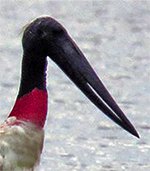
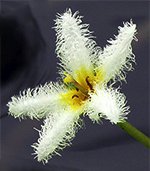
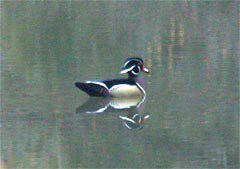 As we enter our 33rd year at Hilton Pond Center we're reminded we've annually resolved to post a mid-winter photo essay about building nest boxes for Wood Ducks . . . but we never followed through. Woodies are freshwater ducks that hang around our pond spring through autumn, disappear when winter arrives, and reappear on or about 15 January. This year our first male
As we enter our 33rd year at Hilton Pond Center we're reminded we've annually resolved to post a mid-winter photo essay about building nest boxes for Wood Ducks . . . but we never followed through. Woodies are freshwater ducks that hang around our pond spring through autumn, disappear when winter arrives, and reappear on or about 15 January. This year our first male 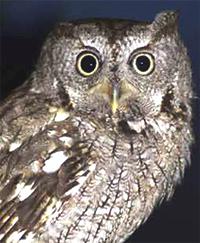 nay, for an inexpensive purchase of materials and a few hours of labor you can build a box to be placed--with permission, of course--on a friend's farm or on a lake at your local nature center. Our personal zoning rules limit the number of duck boxes around Hilton Pond, so we can't accept any more these days--but we're sure someone would cherish a box you might make as a gift to Mother Nature and the local population of the Carolina Piedmont's most colorful waterfowl. And as caveat: Wood Duck pairs have been known to nest in hollow trees and artificial cavities up to a mile from aquatic habitats. If there's a safe corridor between your house and the closest pond or stream, give it a try; if nothing else your new nest box might get you a pair of Eastern Screech-Owls
nay, for an inexpensive purchase of materials and a few hours of labor you can build a box to be placed--with permission, of course--on a friend's farm or on a lake at your local nature center. Our personal zoning rules limit the number of duck boxes around Hilton Pond, so we can't accept any more these days--but we're sure someone would cherish a box you might make as a gift to Mother Nature and the local population of the Carolina Piedmont's most colorful waterfowl. And as caveat: Wood Duck pairs have been known to nest in hollow trees and artificial cavities up to a mile from aquatic habitats. If there's a safe corridor between your house and the closest pond or stream, give it a try; if nothing else your new nest box might get you a pair of Eastern Screech-Owls 
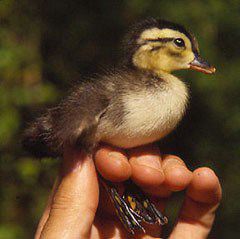 and predator guards to replace those we had received from them and installed 'way back in the summer of 1982--our very first year at what has become Hilton Pond Center.
and predator guards to replace those we had received from them and installed 'way back in the summer of 1982--our very first year at what has become Hilton Pond Center. 
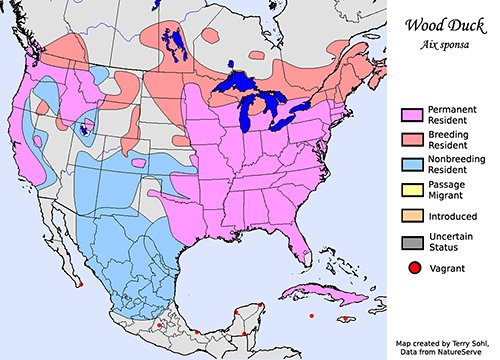
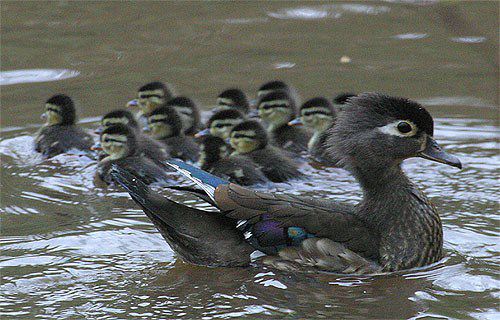
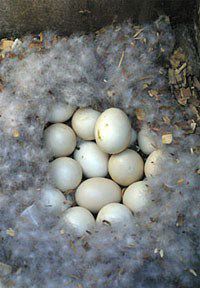 Aim the nest box opening away from the shore so ducklings will be sure to hit water when they make their first jump.
Aim the nest box opening away from the shore so ducklings will be sure to hit water when they make their first jump.
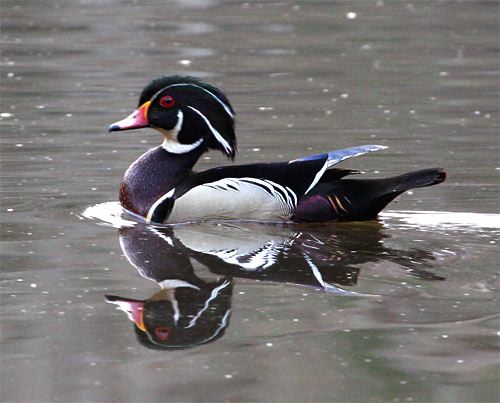
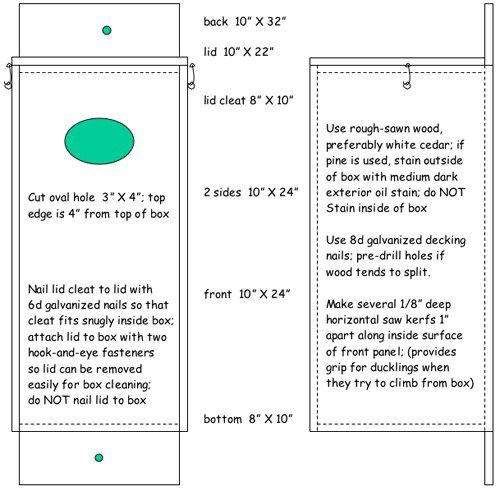 NOTE: Drill several 1/4" holes in bottom of box to allow for water drainage
NOTE: Drill several 1/4" holes in bottom of box to allow for water drainage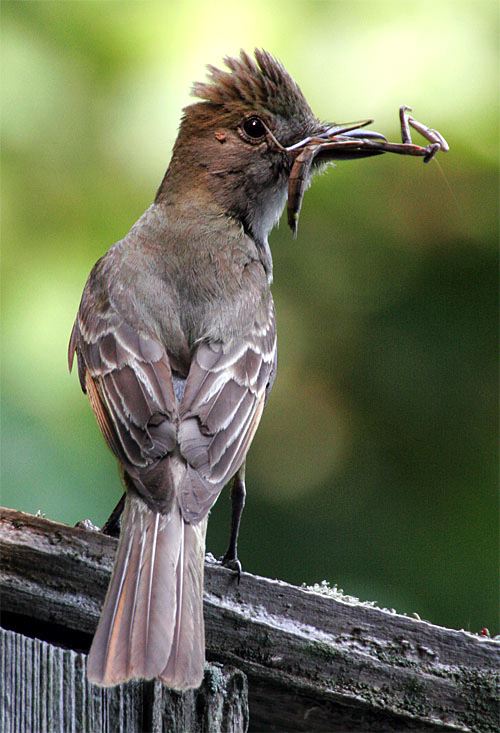








 Oct 15 to Mar 15:
Oct 15 to Mar 15: